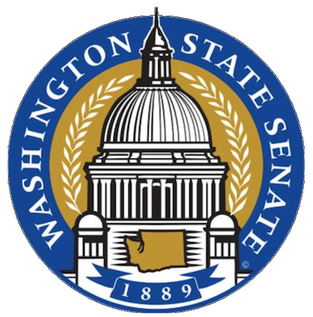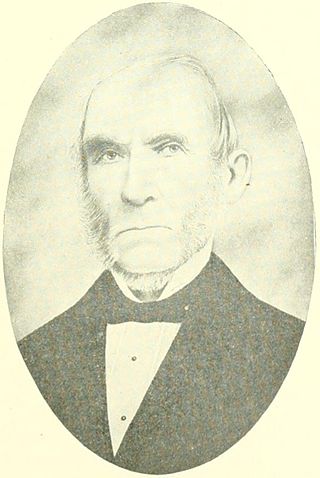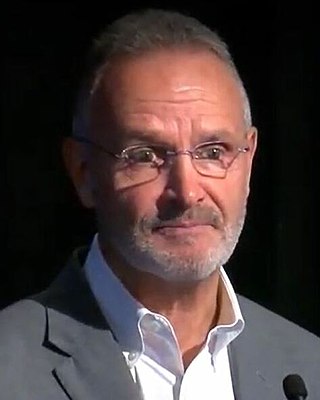
The Vermont General Assembly is the legislative body of the state of Vermont, in the United States. The Legislature is formally known as the "General Assembly", but the style of "Legislature" is commonly used, including by the body itself. The General Assembly is a bicameral legislature, consisting of the 150-member Vermont House of Representatives and the 30-member Vermont Senate. Members of the House are elected by single and two-member districts. 68 districts choose one member, and 41 choose two, with the term of service being two years. The Senate includes 30 Senators, elected by seven single-member and nine multi-member districts with two or three members each. It is the only state legislative body in the United States in which a third party has had continuous representation and been consecutively elected alongside Democrats and Republicans.

The Texas Senate is the upper house of the Texas Legislature, with the Texas House of Representatives being the lower house. Together, they compose the state legislature of the state of Texas.

Redfield Proctor was a U.S. politician of the Republican Party. He served as the 37th governor of Vermont from 1878 to 1880, as Secretary of War from 1889 to 1891, and as a United States Senator for Vermont from 1891 to 1908.

Robert Theodore Stafford was an American politician from Vermont. In his lengthy political career, he served as the 71st governor of Vermont, a United States representative, and a U.S. Senator. A Republican, Stafford was generally considered a liberal, or "Rockefeller Republican".

The Washington State Senate is the upper house of the Washington State Legislature. The body consists of 49 members, each representing a district with a population of nearly 160,000. The State Senate meets at the Legislative Building in Olympia.

Lee Earl Emerson was an American politician who served in both the Vermont House of Representatives and the Vermont Senate. A member of the Republican Party, he was the 63rd Lieutenant Governor of Vermont and the 69th governor of Vermont. When he was first elected in the 1950 Vermont gubernatorial election, he received over 70% of the vote, a feat not equaled until 1992 and not until 2022 by a Republican. Despite his success in 1950, he lost the Republican primary for U.S. Senate in Vermont in 1958 to Congressman Winston L. Prouty. He also lost the 1960 primary for Vermont's seat in the U.S. House of Representatives to incumbent Governor Robert T. Stafford.

Ernest Willard Gibson was an American politician and lawyer from Vermont. A Republican, he served in both the United States House of Representatives (1923-1933) and United States Senate (1933-1940).

The Louisiana State Senate is the upper house of the state legislature of Louisiana. All senators serve four-year terms and are assigned to multiple committees.
The Vermont Democratic Party is the affiliate of the Democratic Party in the U.S. state of Vermont.
The politics of Vermont encompass the acts of the elected legislative bodies of the US state, the actions of its governors, as overseen by the Vermont courts, and the acts of the political parties that vie for elective power within the state. The state's politics include local Democratic and Republican political parties, as well as several smaller parties.

William Wallace Grout was an American politician and lawyer. He served as a U.S. Representative from Vermont.

Fletcher Dutton Proctor was an American businessman, a Republican politician, and the 51st governor of Vermont, who served from 1906 to 1908.

Ryland Fletcher was an American farmer, politician, the 20th lieutenant governor of Vermont from 1854 to 1856, and then was the 24th governor of Vermont from October 10, 1856, to October 10, 1858.
The president pro tempore of the Vermont Senate presides over the Senate of the U.S. state of Vermont in the absence of the lieutenant governor. The president pro tempore also sets the policy priorities and legislative agenda for the Senate.

The 84th New York State Legislature, consisting of the New York State Senate and the New York State Assembly, met from January 1 to April 16, 1861, during the third year of Edwin D. Morgan's governorship, in Albany.

Timothy Parker Redfield was an American lawyer, politician, and judge. He was most notable for his service as a member of the Vermont Supreme Court from 1870 to 1884.

Christopher A. Bray is a Vermont businessman and politician. A Democrat, he served in the Vermont House of Representatives from 2007 to 2011. Since 2013, he has represented the Addison District in the Vermont Senate.

The 2022 Vermont Senate election took place on November 8, 2022, as part of the biennial United States elections. The election coincided with elections for other offices including the U.S. Senate, U.S. House, Governor, and State House. Vermont voters elected all 30 state senators from 16 districts, with each district electing between one and three senators. State senators serve two-year terms in the Vermont Senate. Primary elections were held on August 9, 2022. This election would be the first to use new districts adopted by the Vermont General Assembly to allocate for population changes across the state after the 2020 census.

















